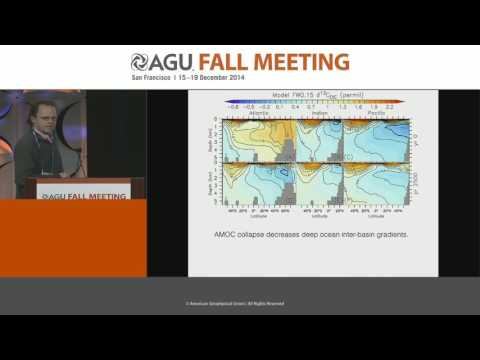Description:
Explore a 20-minute conference talk from the 2014 AGU Fall Meeting that examines the role of Atlantic Meridional Overturning Circulation (AMOC) decline in triggering early deglacial CO2 rise. Delve into the comparison of global climate-biogeochemistry model simulations with high-resolution deep sea δ13C reconstructions and ice core data. Discover how carbon isotope evidence supports the hypothesis that AMOC reduction during Heinrich Stadial Event 1 may have caused the initial atmospheric CO2 increase and δ13C decrease without invoking changes in Southern Hemisphere winds. Learn about glacial-interglacial variability, ocean circulation dynamics, and carbon isotope modeling as the speakers present their findings on this crucial aspect of Earth's climate history.

Carbon Isotopes and Atlantic Meridional Overturning Circulation Decline as Triggers for Early Deglacial CO2 Rise
Add to list
#Science
#Earth Science
#Paleoclimatology
#Oceanography
#Climate Science
#Climate Modeling
#Biogeochemistry